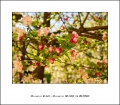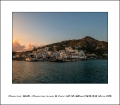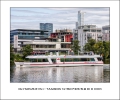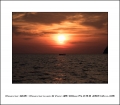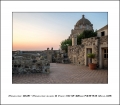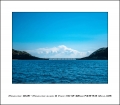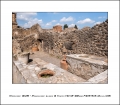The above image is typical of the type of images I like to take and I can get these with the use of my 135mm lenses. It's how I shoot and how I see the world. Some see the world through a 35mm lens and some through a 50mm. My vision tends to be towards the telescopic end of things. As you can see I've been practicing my focusing with these lenses and it's slowly coming together. However, at the moment my misses average more than my hits, so I'll keep on until I feel I'm confident enough to use these manual lenses in earnest.
PhotoBlog of Random Images
|
| Blog Search:
Category Search:
|
04/12/14 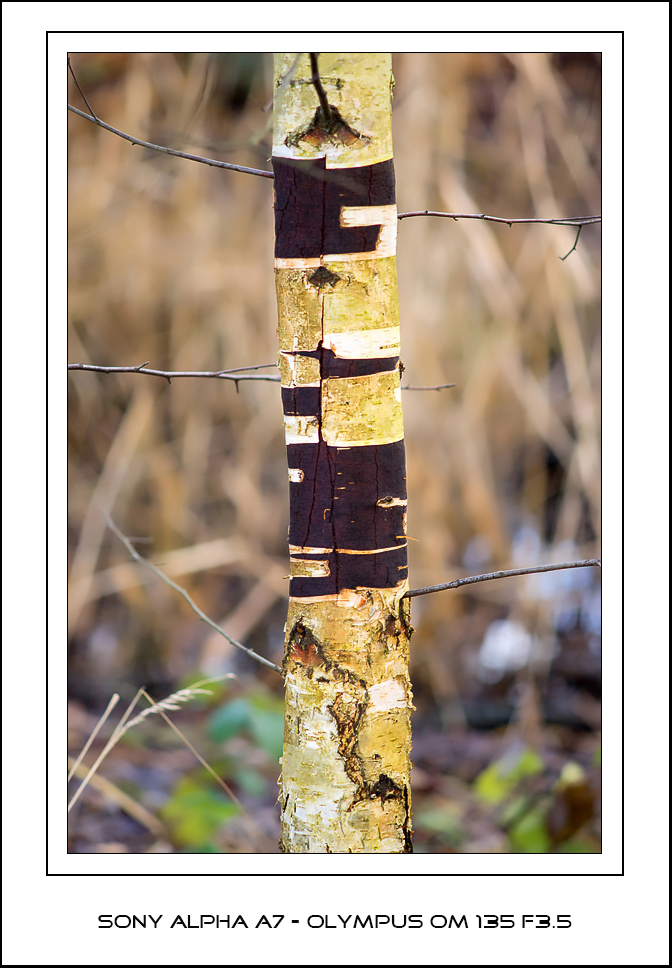 Sony Alpha A7 - Olympus OM 135 f3.5927
ILCE-7 Focal Length: unknown Aperture: f/1.0 Exposure Time: 1/60 sec ISO: 160 04/11/14 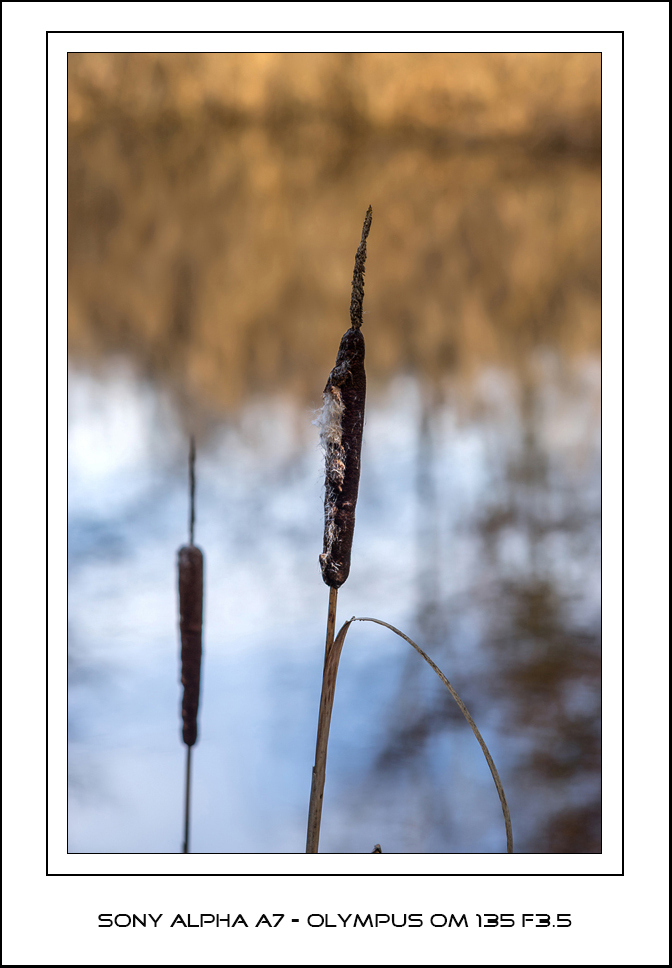 Sony Alpha A7 - Olympus OM 135 f3.5I must admit I like my 135mm lenses, especially the f3.5s. Why? Because they are small, light and real fun to get to the details of my subject. These lenses are usually so light you hardly notice the extra weight on the camera and you can carry them around all day. The above image was taken with the Olympus OM 135 f3.5 which is quite a good lens. My other 135mm lenses incluse a Pentax, Nikon, Konica and Minolta. What does spoil it somewhat is the adapter required to use the lens which does add to the overall length of the lens. In some cases it nearly adds 40% to the length, which isn't ideal but is the price you pay for using these lenses on modern digital cameras.
Some of these lenses are easier to use than others and the Olympus is one of the easier ones. If you use these lenses wide open then more care must be taken when focusing. It's even harder with the f2.8 versions which also adds some weight to the whole rig. Of course, the longer the focal length the harder it is to use. Blurry images is also possible because there is no image stabilisation with these older lenses and the Sony bodies doesn't have IBIS. The Olympus M43 bodies are a diffeent story however, and I must say, I have become a big fan of this great function. The Panasonic GX7 also has IBIS and I take my hat off to Panasonic for implementing this feature in their latest camera. 960
ILCE-7 Focal Length: unknown Aperture: f/1.0 Exposure Time: 1/125 sec ISO: 100 04/10/14 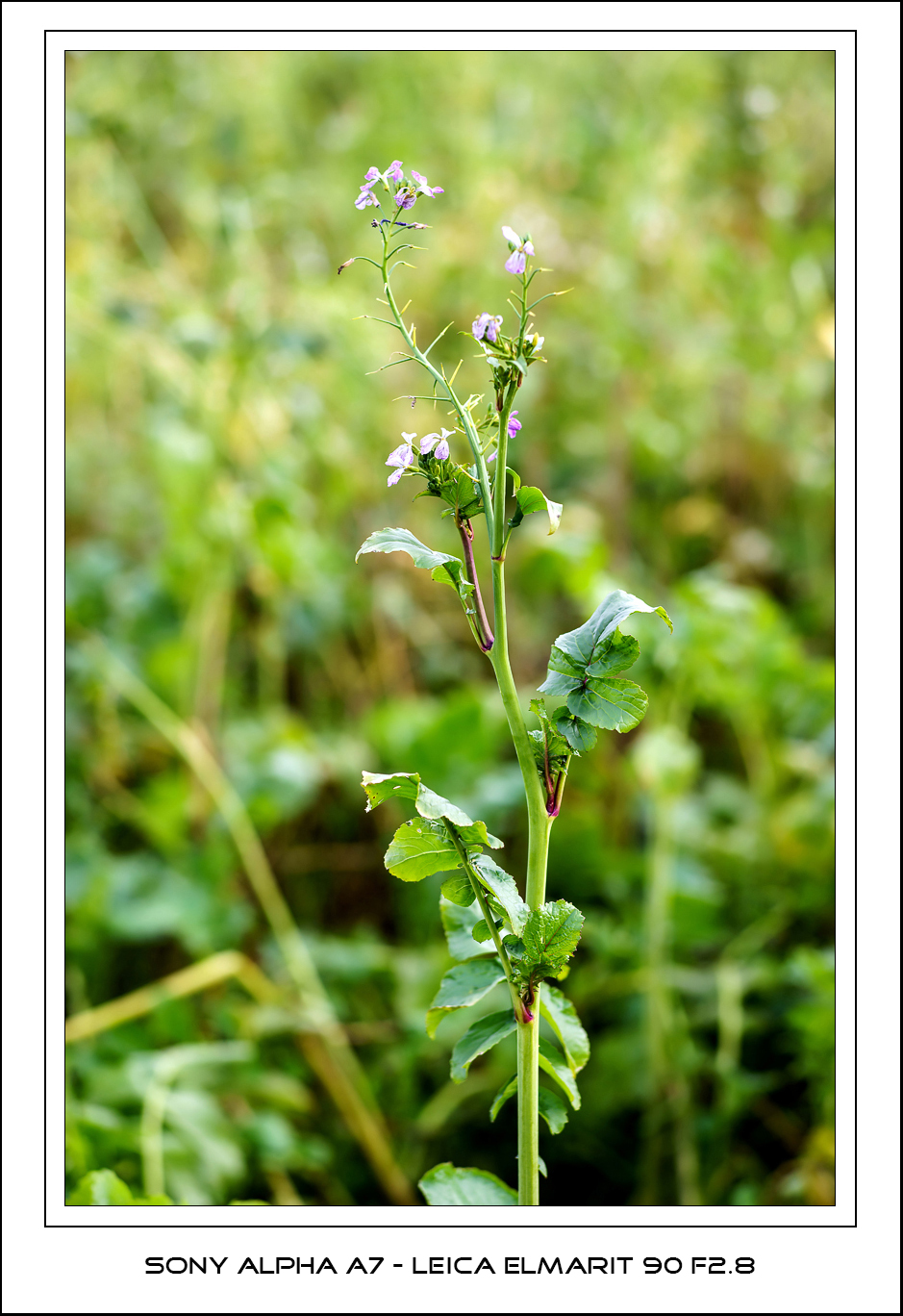 Sony Alpha A7 - Leica Elmarit 90 f2.8This is the last image from the Leica Elmarit 90 f2,8 for now befor I post some images made with some very nice 135mm lenses. All of these lenses are legacy manual focus lenses and have an aperture of f3.5. The reason I like these f3.5 lenses is because they are small, light and don't stick out too much. I have a couple of f2.8 135mm lenses and they're quite a bit bigger and heavier. It really amazing how much glass weighs and how much more glass there is in the f2.8 lenses.
Again, I find using these lenses easier on the A7 because the shutter is not as drastic as on the A7R. I will conquer these two cameras as they were purchased for my manual focus lenses. I find it so much more fun using a manual focus lens and saves me a lot of space on the hard drive as I tend not to take as many images. Just pointing the camera, focus with the AF and holding down the shutter is too easily done. Using the manual lenses just slows me down in every aspect of my photography. 914
ILCE-7 Focal Length: unknown Aperture: f/1.0 Exposure Time: 1/200 sec ISO: 100 04/09/14 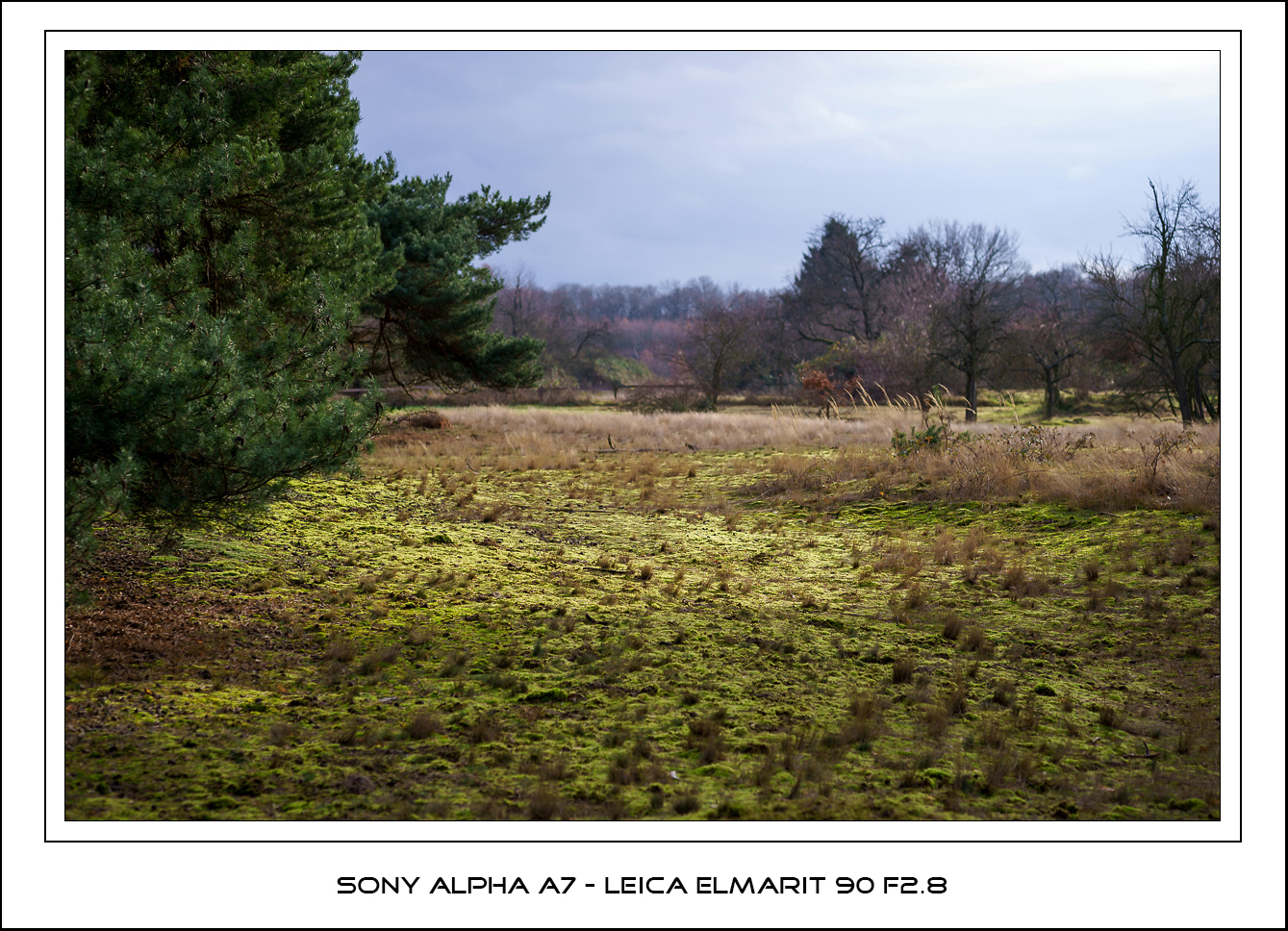 Sony Alpha A7 - Leica Elmarit 90 f2.8Some people might say that there is nothing special with the above image, and they may be right but it's an image that I like so I'm posting it just because I can. I can see exactly where I focused and nailed it too. This is one reason why I like the longer focal length lenses. The longer the lens the less depth of field you have and at this focal length and at an aperture of f2.8, you have very little. 927
ILCE-7 Focal Length: unknown Aperture: f/1.0 Exposure Time: 1/500 sec ISO: 100 04/08/14 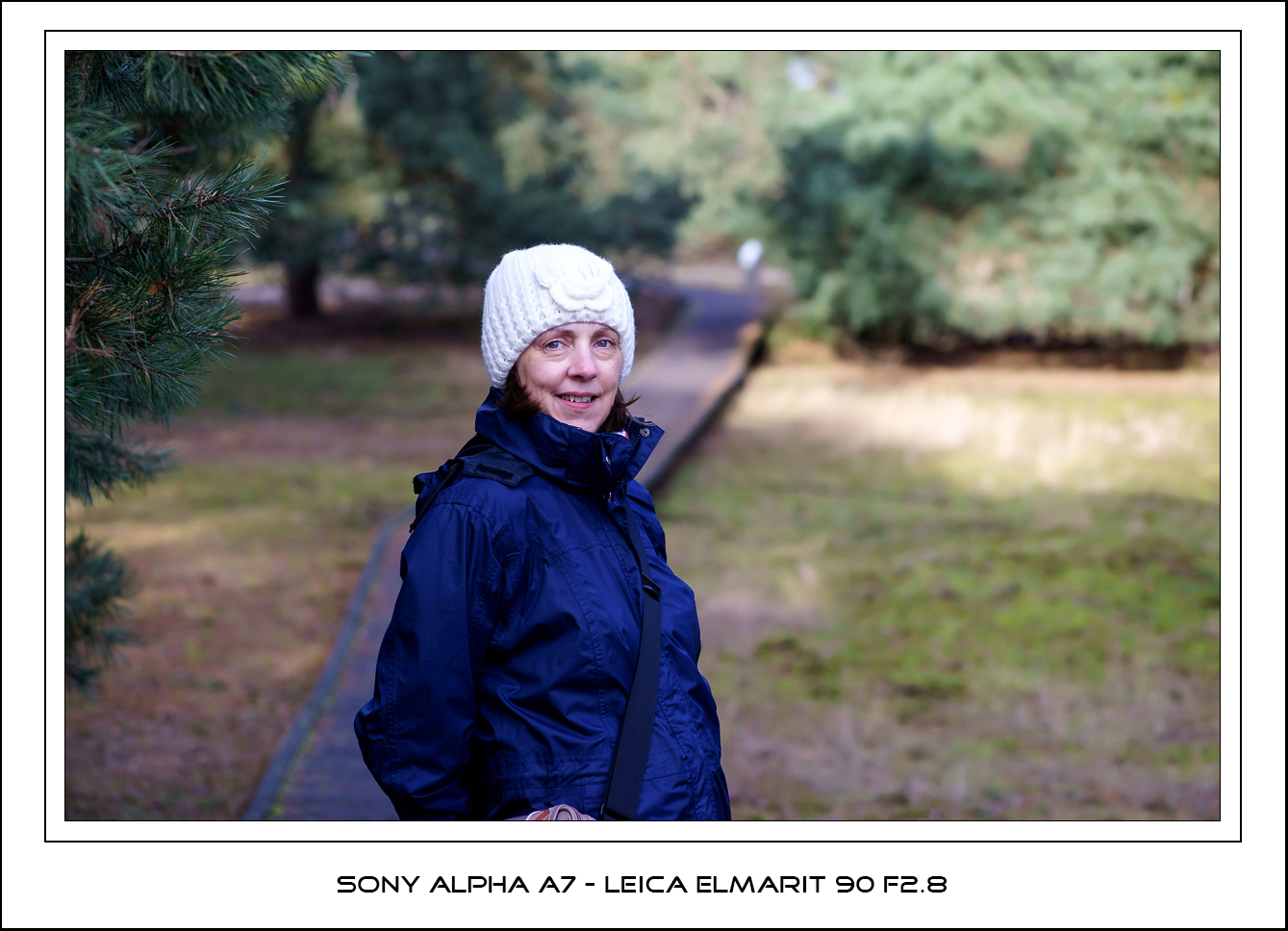 Sony Alpha A7 - Leica Elmarit 90 f2.8I hit the nail on the head again with this shot. I try to get it first time but sometimes it just takes more than one try to get the focus to be where I want it. In this case, it only took one try (because the wife won't stand still long enough for more than one shot). If I bring the camera out around the house she hides immediately. I think she's had enough.
I've had the Sony Alpha A7 and A7R now for a couple of weeks and I must say, I frefer using the A7. That loud double shutter sound bothers me on the A7R and I get a lot more "throwaways" than with the A7. It's probably technique and not the camera so I'm going to have to work on it a lot more. I'm also starting to get a workflow in LR5.3 and Photoshop but that needs some more work too. The files are nice and since I only shoot raw, the jpg engine doesn't bother me. Anyway I like the post-processing (I know I'm wierd that way) and I don't consider it a chore at all. 1048
ILCE-7 Focal Length: unknown Aperture: f/1.0 Exposure Time: 1/250 sec ISO: 100 04/07/14  Sony Alpha A7 - Leica Elmarit 90 f2.8Another example with the Elmarit 90 f2.8. If you're wondering what this lens looks like on the A7 see this post: Obviously I'm not going to show you my bad to very bad attempts at manual focusing but I will show you the images I manged to nail because when you do manage to get the subject in focus, the image quality is just fantastic. I'm sure Sony will release a firmware update for some minor problems with these cameras. I just can't imagine they won't otherwise they'll lose a lot of customers (present and future). 1006
ILCE-7 Focal Length: unknown Aperture: f/1.0 Exposure Time: 1/250 sec ISO: 100 04/06/14 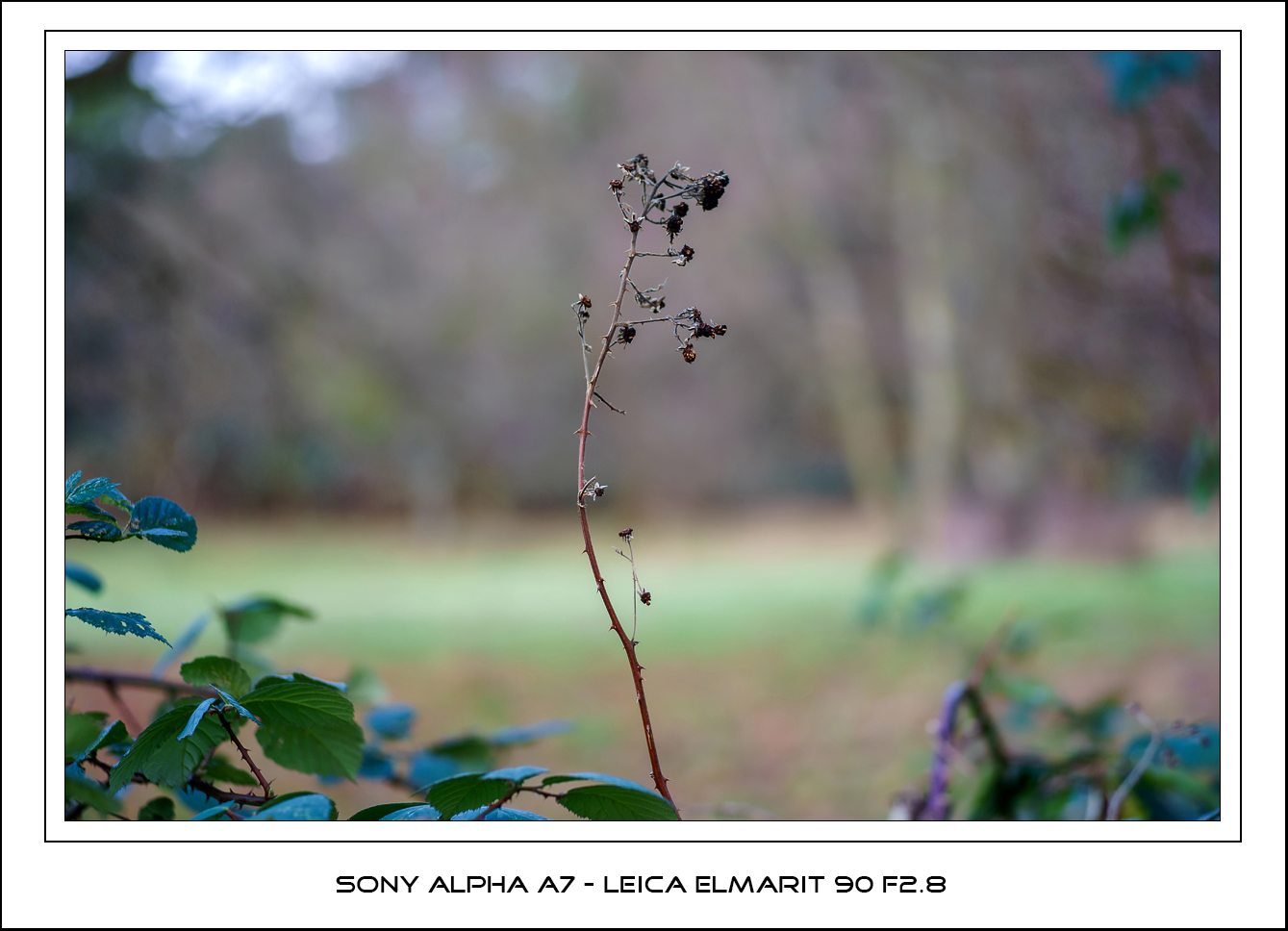 Sony Alpha A7 - Leica Elmarit 90 f2.8Now this is one nice lens on the Alpha cameras. I'm not certain which one I prefer, this one or the Zeiss Tessar 85 f4. But one thing is certain, that extra stop is nice to have and the subject/background separation is great with good bokeh. As you can see I'm still practicing with different lenses and this is the third that I can honestly recommend for the Alpha cameras. More to come. 954
ILCE-7 Focal Length: unknown Aperture: f/1.0 Exposure Time: 1/160 sec ISO: 100 04/01/14 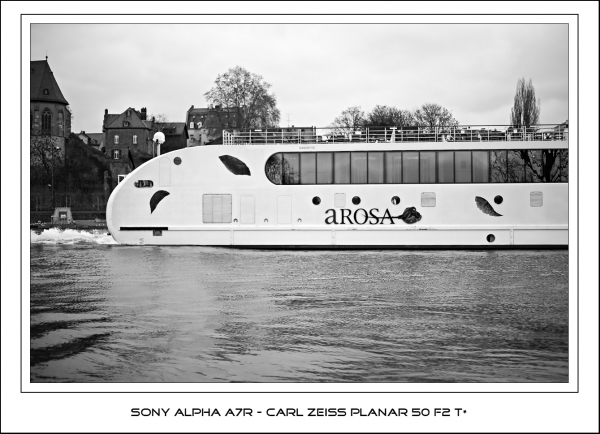 Sony Alpha A7R - Carl Zeiss Planar 50 F2 T*Having purchased this lens specially for the Sony Alpha series, I can say that I'm not disappointed by it's performance. It has it's own special signature and very close to the classic Leica look; something I can see in an image but find it extremely hard to put down on paper. This image was taken while panning as the floating hotel went up the main river. Converted to B&W using a gradient map. 918
ILCE-7R Focal Length: unknown Aperture: f/1.0 Exposure Time: 1/800 sec ISO: 200 03/31/14 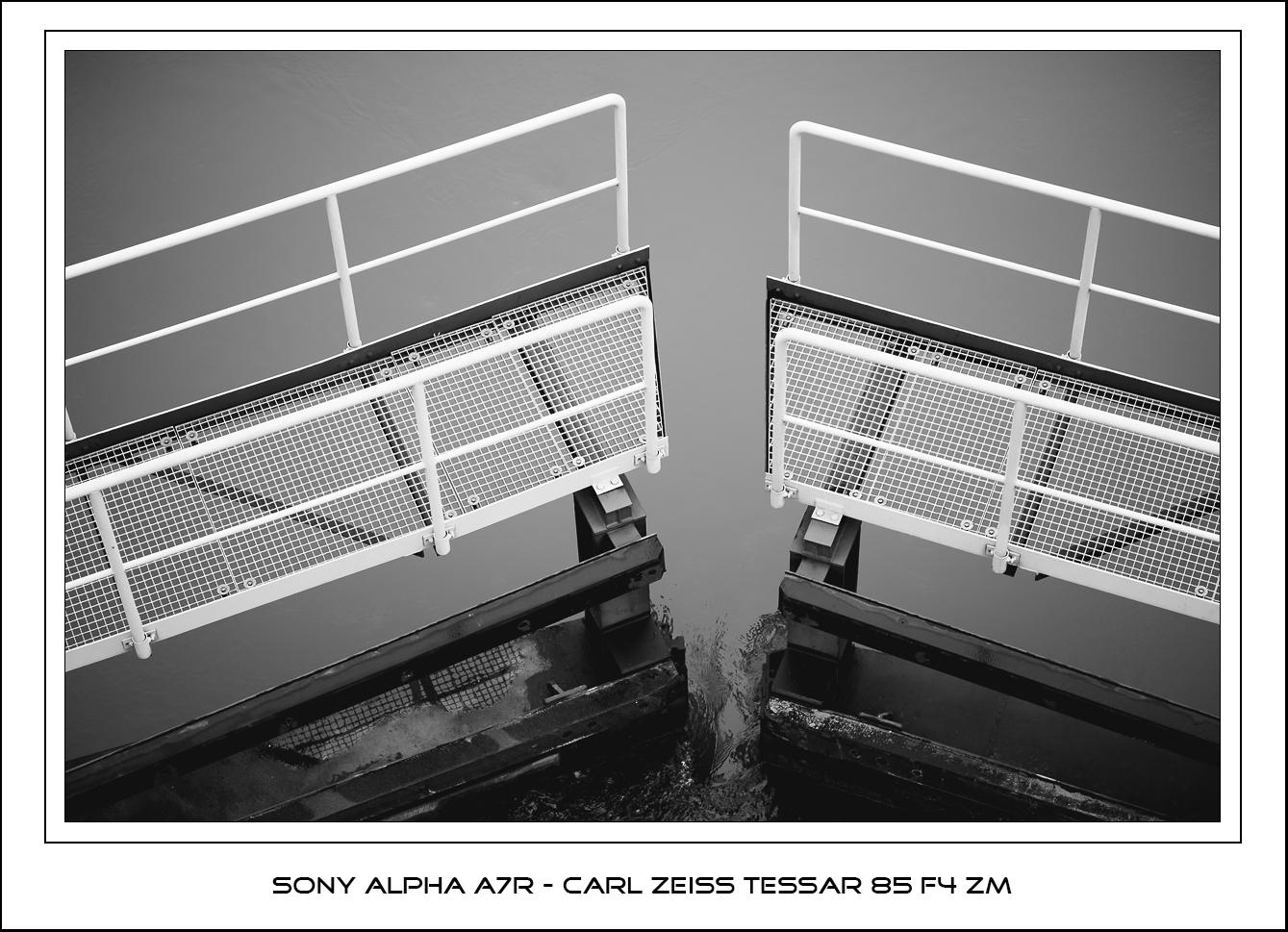 Sony Alpha A7R - Carl Zeiss Tessar 85 F4 ZM T*Another image with the above combination that I like, pretty simple but I still like it. Shows some good tones and a little vignetting which was not introduced in PP. Vignetting adds to the image at times and this is one of them. As you see the lock gate is open slightly as a huge barge was just heading in. This technology isn't new, but I'm still fascinated at how it works. I guess I am a gear freak after all. 988
ILCE-7R Focal Length: unknown Aperture: f/1.0 Exposure Time: 1/100 sec ISO: 200 03/30/14 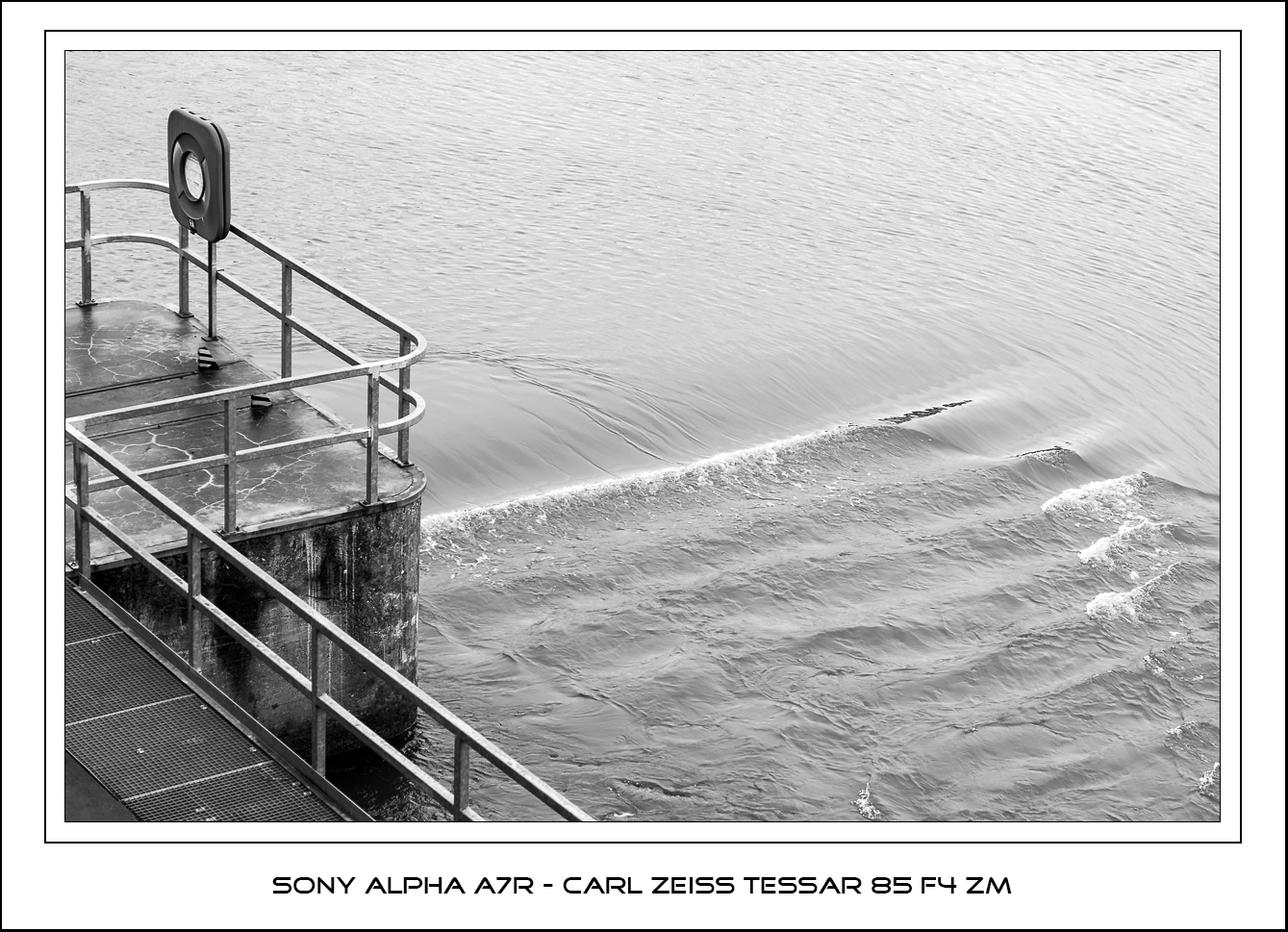 Sony Alpha A7R - Carl Zeiss Tessar 85 f4 ZM T*This is me trying to practice my A7R conversion method using a gradient map. If you don't know how to do this just google it and you'll get a plethora of answers and tutorials on the method. I can actually recommend this methos as I seem to be getting much better results using this method, rather than using Nik SFXII. One of the main benefits I see is no posterisation or colouring in sky areas. I used to get this regularly when using the Nik plug-in, probably because of the was I used it, but that's how I did it. With this methos I get the same results except the files lok a lot better (to me anyway). What drew my attention in the above image was how the water at the lock was being drawn into the sluices, and directing the water to the generators. Yes, electricity is also generated in this lock and I find it an extremely efficient method of production. The lock was built in 1932 but has over the years been renovated and updated with new technology. Notice also there is no colouring in the water at the top and on the right, the tones being even across the image. Detail in the waves (bottom right) is also just amazing. I haven't seen such detail in any images from any camera I have owned, but then again I haven't owned a camera like the Sony A7R before either. 1162
ILCE-7R Focal Length: unknown Aperture: f/1.0 Exposure Time: 1/125 sec ISO: 200 | |




